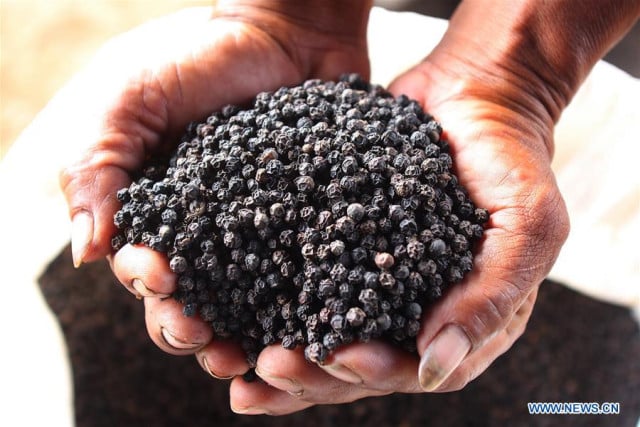Prahok and Kampot Pepper Delight French Newspaper Le Monde

- By Cambodianess
- May 7, 2023 10:00 AM
Under the headlines « Retour de flamme pour le poivre de Kampot » and « Sur les rives du Tonlé Sap, aux sources de la cuisine cambodgienne » – which translate as “A Comeback for Kampot Pepper” and “On the Banks of the Tonle Sap, at the Source of Cambodian Cuisine”– food writer Stéphane Davet recently wrote in the prestigious French daily newspaper Le Monde two columns that give a summary of his gourmet visit to Cambodia early this year.
He especially highlighted Kampot pepper, prahok and the flavors of the food cooked in the villages around the Tonle Sap Lake.
“It would be very hard to find a Western chef able to speak of prahok, this fermented fish paste that is a key element of Khmer cuisine. But we’ve lost count of those who keep on praising these berries growing between sea and (small) mountains,” wrote Stéphane Davet by way of introduction for his story on Kampot pepper.
Guided in his discovery by Dr. Hay Ly Eang, founder of Confirel, the journalist noted that “it is especially the different steps and drying techniques that enable these Khmer jewels to develop and bring up aromas and flavors so valued by experts, that their piquancy – more delicate than many other [members of the botanical family of the] Piperaceae – adorns itself with camphor and menthol scents as for the black pepper, with a suavity of red fruits and candied orange for the exceptional red pepper, or the enhanced heat of the grapefruit for the white pepper.”
The food writer especially had his taste buds excited by the red pepper. “Star of the designation of origin, red pepper is obtained by leaving the berries to reach maturity. Picked by hand one by one, their color is protected by alternating boiling water and ice-cold water before being dried, they offer the exuberant flavors of citrus fruit and cherries. To be tried, for example, on a fillet of bass with lemongrass, foie gras accompanied by a citrus fruit reduction or a strawberry salad,” he wrote.
After leaving the mountain regions of the Gulf of Thailand, it is on the banks of the Tonle Sap that the journalist next went to amaze his taste buds. And obviously, prahok did not leave them unmoved. “As in the case of durian and ‘stinky tofu,’ this greyish fish fermented paste has, in terms of smell, one of the worst reputations in Asian cuisine. What delights, however, are made due to this condiment, often referred to as ‘Cambodian cheese,’ found on all tables in the country,” wrote Stéphane Davet, filled with enthusiasm.
Fish, plants, condiments: The incredible variety of products made available to cooks by Nature in and around the Tonle Sap Lake has not failed to impress the journalist who was not able to resist getting to the stove in a small village and preparing a few traditional dishes under the guidance of the local housewives.
For a long time, the Khmer culinary heritage has hardly been put into the limelight in the restaurants of Phnom Penh that were leaving it to street food vendors to do so, said Stéphane Davet. “Unlike the Thais, we have failed to valorize our cuisine,” confessed Luu Meng, a respected chef who oversees several restaurants in Phnom Penh and Siem Reap City. This has been due, he said, “to a lack of pride and transmission accentuated by the atrocities of the Khmer Rouge regime in the second part of the 1970s.”
Seduced by the flavors and Khmer culinary creativity, the journalist pays a tremendous tribute to a too little-known heritage. The Ministry of Foreign Affairs and International Cooperation has wisely developed a strategy known as culinary diplomacy. The French food writer’s stories prove the ministry right: Prahok has the potential of becoming a weapon of mass seduction.















